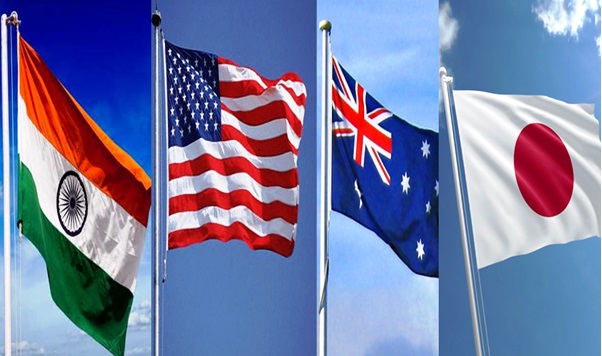
Geopolitical Churning in the Indo-Pacific and the Persistent ‘Sea Foam’ of QUAD
Tue, 20 Oct 2020 | Reading Time: 10 minutes

Notwithstanding constraints of COVID Pandemic, Foreign Ministers of Australia, India, Japan and the United States met in person for the Second Quad Ministerial Meetings in Tokyo. This Quad meeting is considered to be of significance as it was held during the times of geopolitical disarray caused by still raging Covid pandemic and China’s unabashed assertiveness which continues to unfold simultaneously in the maritime realm of Pacific and Himalayan heights of India’s border. Also, the Quad has lost one of its key architect and sponsor when Mr Shinzo Abe abdicated his premiership of Japan due to his ill health.
There was not any joint statement after the meeting. Members issued separate statements and readouts which broadly indicated affirmation about maintaining a free, open and inclusive Indo-Pacific and reiteration their firm support to ASEAN centrality in the regional architecture. Quad members exchanged views on issues of common interests as regional security, challenges to rule-based order and explored pathways for enhancing cooperation on HA/DR (Humanitarian Assistance and Disaster Relief), maritime security, counter terrorism, and cybersecurity. While the US Foreign Secretary highlighted the need for collaboration to counter “CCP’s exploitation, corruption, and coercion”, other members of Quad including India were rather circumspect and made oblique references to their concerns about China.
This Quad meeting with exception of a face to face meeting – rather than a virtual meeting during Covid times – was no different than to the previous meeting of this group. Apart from Covid related discussions about vaccine and supply chain resilience, other items on agenda pointed towards consensus on progressing discussions on the priority areas identified in the past meetings. The Chinese response to the second Quad meeting also had anodyne familiarity which warned against forming small clique to target third countries along with sharp criticism of the US for “maliciously manufactured political confrontation.”
While it is true that there was no path-breaking outcome from the 2nd Quad Ministerial meeting in the public domain, it needs to be noted that Quad did not dissipate like a “sea foam” as anticipated by Chinese Foreign Minister Wang Yi in 2018 who considered Quad construct as a ‘headline-grabbing idea’. Even though there continues consternation about absence of joint statement or lack of clarity about the future process of institutionalisation, it needs to be remembered that the story of the Quad is one of gradual convergence, not rapid institutionalisation.
Genesis and Evolution of Quad- Persistence of a Sound Geopolitical Logic
The idea of Quad construct traces its root in a rather ephemeral ad-hoc group comprising of India, Australia, Japan and the United States which sprang up as a new network to swiftly mobilise aid and coordinate relief work during AsianTsunami in 2004. In less than 48 hrs, four countries brought together 40,000 troops and humanitarian responders, dozens of warships, helicopters, cargo ships and transport planes within a multinational Combined Support Force 536 (CSF-536) which were deployed with extra-ordinary speed and skills. This Tsunami Core Group did not have a secretariat, did not meet face to face and did not issue any communiqué. Four Countries with resources and motivations to act swiftly got together, delivered urgent humanitarian aid and disbanded as soon as established institutional frameworks began to gather steam.
Notwithstanding the transient existence of the ad-hoc group on Tsunami, the idea of a collaborative mini-lateral framework for addressing issues of regional concern among the four countries persisted. Ambassador Shyam Saran, India’s foreign secretary during the period, has noted that this experience provided the impetus to an idea that four democracies with substantial naval capabilities should set up a consultative forum of for regular exchange of views. Accordingly, officials from the four countries met on the side-lines of Asian Regional Forum for an informal consultation, which is considered as the beginning of Quad or Quad 1.0.
The significance of this Quad consultation did raise heckles in China who saw this as an emerging alliance to contain China. Largely mindful of Chinese concerns, the first meeting of Quad was held without any formal agenda and the issues discussed were not publicised.
Notwithstanding Chinese protestations, Quadrilateral consultations continued to retain its momentum even though some fragility had begun to emerge. In late September 2007, navies of four countries along with Singapore participated in an expanded version of the US-India bilateral Malabar exercise 07/02 in the Bay of Bengal which led to intensifications of Chinese campaign against Quad. Further, speculations about Quad’s potential emergence as an ‘Asian NATO’ leading to some domestic disquiet and rethinking within Quad countries about its relevance. At the same time, the domestic political landscape in the four countries has begun to change. A key driver, Shinzo Abe resigned from the premiership of Japan in September 2007. In early 2008, the new government of Kevin Rudd in Australia made it clear that it would not participate in future quadrilateral activities, apparently in deference to Chinese sensitivities. India also dithered due to lack of political consensus on the Quad construct in general and strong opposition of left parties in particular. Even the US displayed a lack of enthusiasm in progressing the Quad construct further. Thus, due to a series of tactical considerations Quad 1.0 ended in 2008 when four countries decided not to go ahead with this informal dialogue. The premature demise of Quad 1.0 did not necessarily mean that the big-picture idea of an Australia-U.S.-Japan-India dialogue was a non-starter. It soon became apparent that this idea was a little ahead of its time.
The big picture behind this construct was the recognition of Indo-Pacific as a unitary geostrategic space. Globalisation and trade interdependence had begun to transform Asia’s economic landscape leading to its recognition as the global economic and strategic centre of gravity. The economic dynamism in the region and the unprecedented growth in maritime trade rekindled the legacy of maritime Asia. The Indian Ocean and Western Pacific could no longer be seen as distinct and separate due to overlapping economic, geopolitical and strategic interests of all regional actors. With trade interdependence primarily driven by maritime trade being at the core of regional economic growth, the regional maritime strategic environment became the locus of regional geopolitics.
While coherence of Indo-Pacific regional construct was an evolutionary process shaped by growing trade, investment, and energy links, regional geopolitical anxiety has begun to intensify. The maritime trade has always been vulnerable to disruption and maritime system’s vulnerability increased manifold due to distributed manufacturing networks, ‘just enough, just in time’ supply chains. During 2003-2004, the scourge of piracy started to emerge as a serious threat to sea-based globalisation in the key regional choke points in the Gulf of Aden and Malacca Straits. Other non-traditional threats viz, the proliferation of WMD (weapons of mass destruction) and maritime terrorism also started becoming a serious concern. These imperatives made maritime security cooperation a key area of convergence among the four democratic maritime powers in the region.
While Indo-Pacific regional construct was emerging as an area of interaction and interdependence, China’s growing assertiveness exacerbated regional geopolitical anxiety even further. Even though countries in the Indo-Pacific region sought a modus vivendi through accommodation with China, Beijing responded with greater assertiveness, whether with Japan in the East China Sea or with Southeast Asian states in the South China Sea. Established regional institutions for ameliorating regional geopolitical anxiety under the aegis of ASEAN was not yielding desired results. China had managed to undermine ASEAN unity by selectively wooing its smaller and vulnerable members of ASEAN to its side. Consensus based approach of ASEAN diplomacy soon became overwhelmed by divisiveness induced by Beijing.
The geopolitical churning in the Indo-pacific progressively began to coalesce the four democracies towards a quadrilateral arrangement to support a rules-based order in the Indo-Pacific and also to place limits on Chinese assertiveness. However, within this broad impetus for convergence, it was obvious that the four countries were simply not on the same page regarding the major threats facing the region or the means of addressing those challenges. They remained mindful of Chinese sensitivity towards Quad construct. Over the decades, governments in all four countries explored the possibility of a modus vivendi with Beijing, sometimes at the expense of a deeper strategic partnership with the other three democratic powers. China belied reciprocal expectations of being mindful of others’ sensitivities and Beijing assertiveness took an even sharper tone. The limitations of engagement with Beijing started to become apparent and the necessity of alternative approaches to better manage China’s rise started became clearer.
Given this geopolitical context, crumbling of Quad proved to be small interregnum in the larger picture of growing realignment among the four major democracies. Converging interests in the Indo-Pacific and continued misgiving about China continued to remain a key driver for progressing need-based functional cooperation among the four countries. Along with the strengthening of bilateral relations among the four countries, triangular cooperation continued to develop into an efficacious form of minilateralism. The trilateral strategic dialogue between the US-Japan- Australia witnessed not only closer coordination in the policy realms, but also greater levels of functional collaboration in intelligence sharing and force inter-operability. Similarly, the US-India-Japan saw a significant increase in strategic policy coordination. Besides, India-Japan-Australia trilateral also gathered significant momentum. Progressively a web of trusted security relations in every other permutation among the Quad members had begun to take concrete shape which was described by Shinzo Abe as “democratic security diamond” when he returned as Prime Minister of Japan in 2012.
With a decade of relationship building and further strategic alignment in hand, the stage was set in 2017 for a resumption of dialogue among the four countries as Quad 2.0. In the decade long interval between Quad 1.0 and 2.0, the strategic balance in Asia to become more uncertain but had afforded further time for ties among the four nations to mature along with consensus for closer cooperation among democracies to achieve ‘a balance in the Indo-Pacific favourable to our interests’. It was becoming clear that deferring to Chinese sensitivities has done little to moderate Chinese assertive behaviour, whether in the East or South China Seas or the Indian Ocean. In November 2017, officials from the four countries’ foreign ministries met once again in Manila, on the side-lines ASEAN Summit for a working-level meeting around the theme of a “free and open Indo-Pacific”. On completion, separate statements were issued by the four countries outlining issues discussed. Seven core themes could be discerned from these statements: the rules-based order in Asia, freedom of navigation and over-flight in the maritime commons, respect for international law, enhancing connectivity, maritime security, the North Korean threat and non-proliferation, and terrorism. The statements, however, were far from identical and indicated varying priorities among members despite their broad convergence on these issues. In 2019, the level of interaction was enhanced to an annual ministerial level with working-level meetings of Senior officials biannually. The first ministerial level meeting was held at New York in September 2019 which was followed by working-level meetings of senior officials in Nov 2019 at Bangkok and a virtual meeting in Sep 2020 before the second ministerial meeting in Tokyo in Oct 2020.
QUAD 2.0 Quo Vadis
Rather than issuing a joint statement, Quad members have thus far chosen to issue separate statements and readouts outlining their goals and agenda in the Quad construct. While each statement uses similar phraseology to describe the convergence of views on seven core themes and affirm their commitments towards the promotion of ‘free and open Indo-pacific’, there has been discernable differences in the relative priorities and preferences among the Quad members. Quad members have largely remained reticent in explicitly mentioning China even though it has been implied. In a rather exceptional plain speak, the US Foreign Secretary for the first time openly sought collaboration of Quad members to protect “people and partners from the CCP’s exploitation, corruption and coercion”. Given the commitment of the nations to intensify formalization and greater institutionalization of the framework, these varying accents provide flexibility to the forum for expansion of agenda in future.
Quad construct has also gathered momentum in different domain. A joint panel of senior military officers from Quad countries has been a constant feature in the Raisina Dialogue at New Delhi from 2018 onwards highlighting convergence of views within militaries of Quad members on military security issues in the Indo-Pacific. India hosted the first counter-terrorism table-top exercise (CT-TTX) among the Quad countries in New Delhi on November 2019. Cyber experts from Quad countries met in Dec 2019 to discuss shared challenges in cyberspace including cybercrime and 5G. Beyond the Quad construct, the four countries have continued to deepen and institutionalise their strategic cooperation at bilateral and trilateral levels as well. Trilateral comprising of two Quad members and one of the other like-minded countries – Indonesia, France, and South Korea – have begun to emerge. Quad constituents have also engaged with like-minded countries on a range of issues including COVID-19. Defence cooperation among Quad members continues to enhance with a progressive enhancement of interoperability through exercises at the bilateral and trilateral format. Australia has been now formally invited to join forthcoming Malabar series exercise setting the stage for a quad naval exercise after more than a decade.
While the sceptics have criticised lack of significant momentum towards institutionalisation of the Quad construct, there also exists some uneasiness with the rapid momentum the Quad seems to be gathering. Critics have argued that the Quad is a military alliance or ‘Asian NATO’ aimed at containing China which is bound to further provoke China with deleterious consequences for regional peace and stability. Should the nature of partnership in the Quad be defined as a value-based coalition or a traditional alliances based on a formal treaty? The issue got a fresh lease of life early last month when remarks by U.S. Deputy Secretary of State Stephen Biegun were widely (mis)interpreted as suggesting that the Quad is the nucleus of an incipient NATO-like security organization for the Indo-Pacific. There also exists an apprehension that Quad is an exclusive clique which will compel countries to choose sides thereby fragmenting regional unity. Also, Quad construct will undermine ASEAN centrality as a key pillar of the regional bloc. In essence, Quad construct is being criticised for being “too slow” and “too fast” at the same time.
Right from the inception as an ad-hoc group of Tsunami, India has been a key pillar in supporting the Quad construct. It has been argued that India’s participation is has made the Quad construct viable, given the fact that the other three actors are bound already by a US-led security framework. India’s future growth trajectory remains critically dependent on a stable regional order in the Indo-Pacific which needs to remain free, open and inclusive. India’s strategic imperatives to foster a closer strategic partnership with Quad countries has been an outcome of the strategic concerns originating from China’s unbridled assertive behaviour. While ongoing standoff at Ladakh has fundamentally altered India-China bilateral dynamics, Chinese assertiveness towards India has been evident in South Asia and the Indian Ocean for more than a decade. In addition to the Quad, India has been assiduously attempting to build a web of security networks at the bilateral and trilateral level within Indo-Pacific to bolster its security paradigm. While Quad is considered a useful construct in managing Chinese assertiveness, there has been some anxiety with the possibility of Quad’s future evolution as a military alliance. On the other hand, prevailing obsession with non-alignment diverts Delhi’s policy attention away from the urgent task of rapidly expanding India’s national capabilities in partnership with like-minded partners. Notwithstanding its articulated adherence to the doctrine of nonalignment and strategic autonomy, India in the past has shown realpolitik dexterity to craft security cooperation agreement with countries which were an alliance of sort sans its label. These include security treaties with Nepal and Bhutan in 1952 and with the Soviet Union in 1971.
Quad 2.0 is on much firmer footing than often assumed and has certainly defied the expectation of being a ‘sea foam’. This progress was the hard-fought result of years of intra-Quad diplomacy and the convergence of views on regional security issues. While Quad 2.0 remains a work in progress, it needs to be highlighted that the process of institutionalising any regional framework often takes time even after broad consensus on the regional construct among relevant actors. The process goes through multiple iterations and often protracted negotiations. Going forward, Quad members would have to assure ASEAN about its centrality in the regional geopolitical discourse by developing frameworks which complement existing institutions under ASEAN aegis like East Asia Summit, ASEAN Plus Dialogue and ASEAN Defence Minister Meeting Plus (ADMM Plus). To counter prevailing refrain about Quad being an ‘exclusive club’ of regional powers, Quad members would need to promote Quad Plus framework by co-opting suitable regional and extra-regional actors. The label of Quad being a “concert of democracies” or “Democratic Security Diamond” may need revisiting, since it would pose problems in building partnership with a country like Vietnam.
Quad 2.0 has certainly gathered momentum with growing convergence of views among members. The debate continues regarding the future role, value and relevance of Quad construct. There have been significant changes in the Chinese perception about Quad. Chinese Foreign Minister Wang Yi is no longer dismissive about the Quad construct as a “sea foam”. During his visit to Malaysia on 13 October, he remarked that strategic cooperation between the United States, Japan, Australia and India in the form of the Quadrilateral Security Dialogue is part of Washington’s effort to build an “Indo-Pacific NATO”. While earlier Beijing ire was concentrated towards the US and had maintained relatively guarded attitude toward the grouping itself, now it has chosen to implicate all four actors in the Quad as implicitly presenting a collective security risk to the region. Even though Quad 2.0 remains a work in progress, it has served the limited purpose of political signalling.
Disclaimer
The opinions expressed in this article are the author’s own and do not reflect the views of Chanakya Forum. All information provided in this article including timeliness, completeness, accuracy, suitability or validity of information referenced therein, is the sole responsibility of the author. www.chanakyaforum.com does not assume any responsibility for the same.
Chanakya Forum is now on . Click here to join our channel (@ChanakyaForum) and stay updated with the latest headlines and articles.
Important
We work round the clock to bring you the finest articles and updates from around the world. There is a team that works tirelessly to ensure that you have a seamless reading experience. But all this costs money. Please support us so that we keep doing what we do best. Happy Reading
Support Us




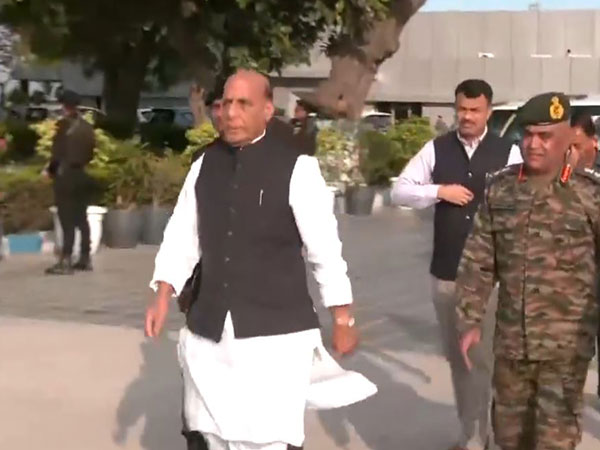

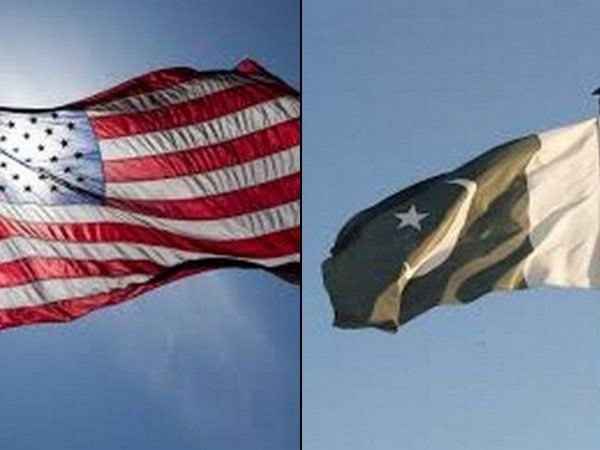
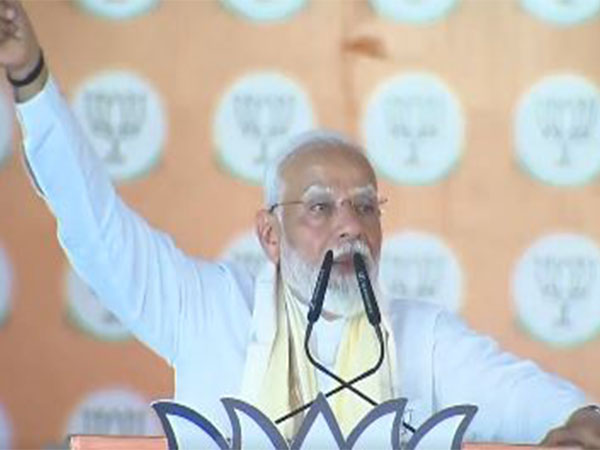
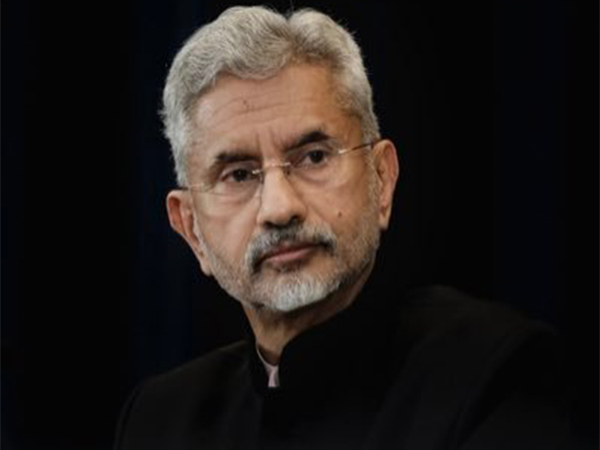
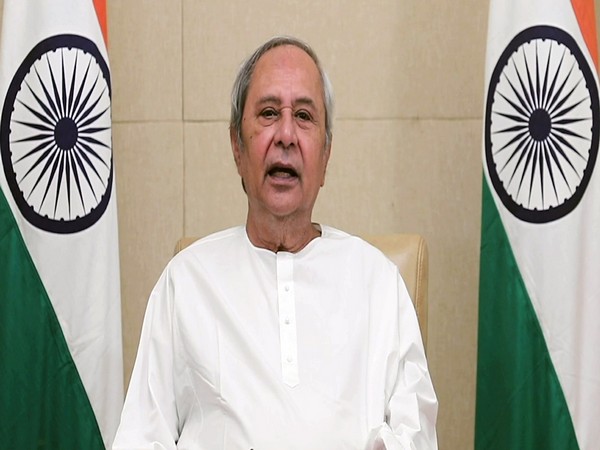


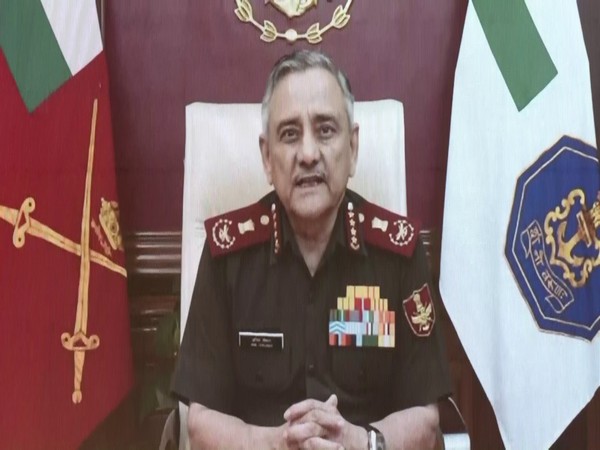
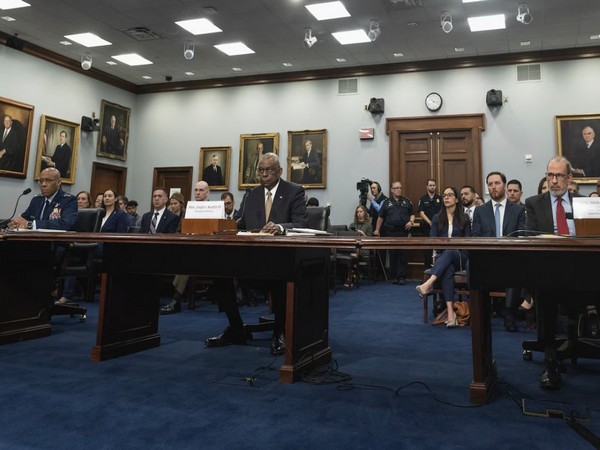






POST COMMENTS (0)